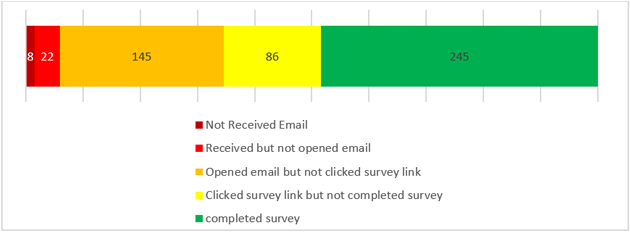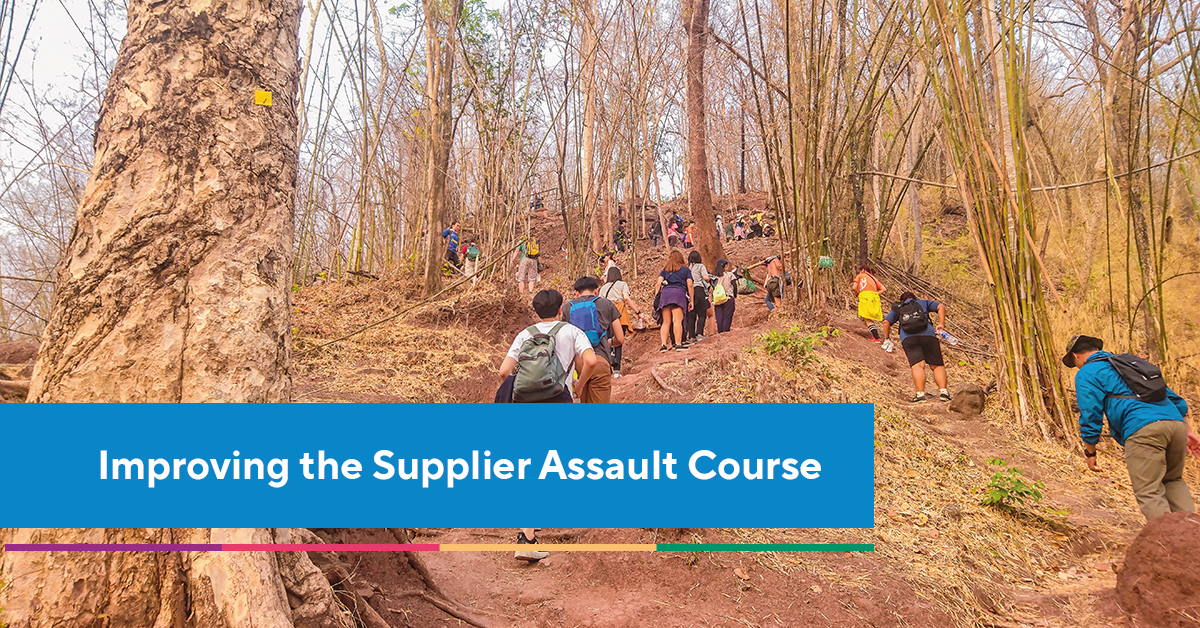Suppliers are experts in their field. Although we may not stop to think about it too often, it’s undoubtedly true. Those of us who buy their products and services know what we want, but the suppliers are the ones who know how to make it happen.
However, they’re not experts in everything. Specifically, suppliers are not experts in your company’s processes, requirements, and legislative needs. As a result, each task, project or initiative that you undertake with a Supplier will involve potential pitfalls and sticking points for them.
In fact, setting suppliers a task is a lot like asking them to complete an 'assault course'. There’s a definite goal in sight, but to get there, they’ll have to do a few things they don’t normally do, and it’s going to be lots of hard work.
It makes good business sense to provide suppliers with the tools and know-how to get through the assault course successfully. The effort required to coach them through the tricky parts of what you need to achieve with them is more than worth it, because it results in engaged suppliers who will work efficiently with you on this task, and on future undertakings.
Like that, but better.
Over the past few weeks on the Supply Pilot blog, we’ve taken a look at how to identify and address the obstacles suppliers may face.
In this final post in the Supplier Assault Course series, we’ll be looking at responding to unexpected obstacles, and measuring success with a view to doing an even better job with your next assault course.
Step 5: Review and understand progress
The assault course methodology requires ongoing review of how your suppliers are progressing. You may not have known all the obstacles when you began, alternatively, you may have misunderstood how to address the ones you did anticipate.
After all, you may not always have prior experience of supporting your Suppliers through this particular topic via an Assault Course.
Assigning KPIs (Key Performance Indicators) to each stage allows you to review how your Suppliers are progressing with the view to moving them along. Consider the stages of our real-world scenario of asking suppliers to complete a survey:
- Correct contact at the supplier receives the survey
KPI: Email Delivery Rates - Your contacts opening the survey in their inbox
KPI: Email Open Rates - Your contacts starting the survey
KPI: Email ‘Click-though’ rates - Your contacts completing the entire survey
KPI: Survey Completion rates

As you can see from the example chart above, 261 Suppliers have yet to complete the survey. This approach allows us to tailor our response to each group of suppliers separately and maximise the time and ultimately reduce the time we spend chasing.
For example, 8 suppliers have not made it past step 1; they haven’t even received the survey so they have no chance of completing it! Sending a chaser email is simply a waste of time for this bunch.
Why didn’t they receive the email? And don’t worry if you’re not sure. Sometimes there’s nothing more powerful than picking up the phone to a few of the suppliers in each group to ask them yourself.
Step 6: Address the Obstacles, Again
Once you’ve reviewed and understood your suppliers’ progress, we need to address any new or existing obstacles. This could mean resending the survey to new email addresses for suppliers who have yet to receive the survey. Or sending a chaser email with a stronger tone within the subject line for those who have received the email but have yet to open it.
I’d always recommend starting where the largest number of suppliers sit – in this case, those who have opened the email but not clicked the survey link, as addressing these will produce the largest return.
Step 7: Repeat!
Some suppliers will always require more support than others and many may come across more than one obstacle to completing the survey. And that means it’s so important to continue reviewing and understanding progress so you can address the obstacles to completion.
There is no set number of repetitions of this process. All tasks, projects or initiatives are unique. But it does get easier.
The mentality of ongoing review, understanding and action breeds a culture of curiosity and continuous learning that fundamentally changes how you and your team approach problems. The assault course methodology becomes habit. And this is a habit which I truly believe sets all of your supplier activities up for success.




